As summer begins to fade and the vibrant greens of the garden transition into the warm, ochre tones of autumn, September offers a unique opportunity for gardeners to revitalize their spaces. This transitional month paves the way for a diverse array of flowers that thrive with cooler temperatures. Planting in September can set the stage for a stunning garden that carries you through the fall and even into the winter months if you play your cards right.
In this guide, we’ll explore flowers that are excellent choices to plant in September. We’ll explore their growing requirements, care, and how they can emotionally enhance your gardening experience. With these flowers, your garden will not only flourish but will also resonate with the spirit of the upcoming season.
Aster

Asters are wonderfully vibrant flowers that bloom from late summer through fall, showcasing colors in various shades of purple, pink, and white. These flowers are perfect for late-season gardens, attracting pollinators such as bees and butterflies—adding life and movement to your gardening haven.
When planting asters in September, choose a location that gets full sun, ideally six hours or more each day. They thrive in well-drained soil, so consider adding compost or peat moss to enrich the ground. Asters can tolerate a variety of soil types but prefer slightly acidic conditions. Water them regularly but do not overwater, as this can lead to root rot. Regularly deadheading them during the blooming season will encourage new growth and longer-lasting flowers.
Mums (Chrysanthemums)
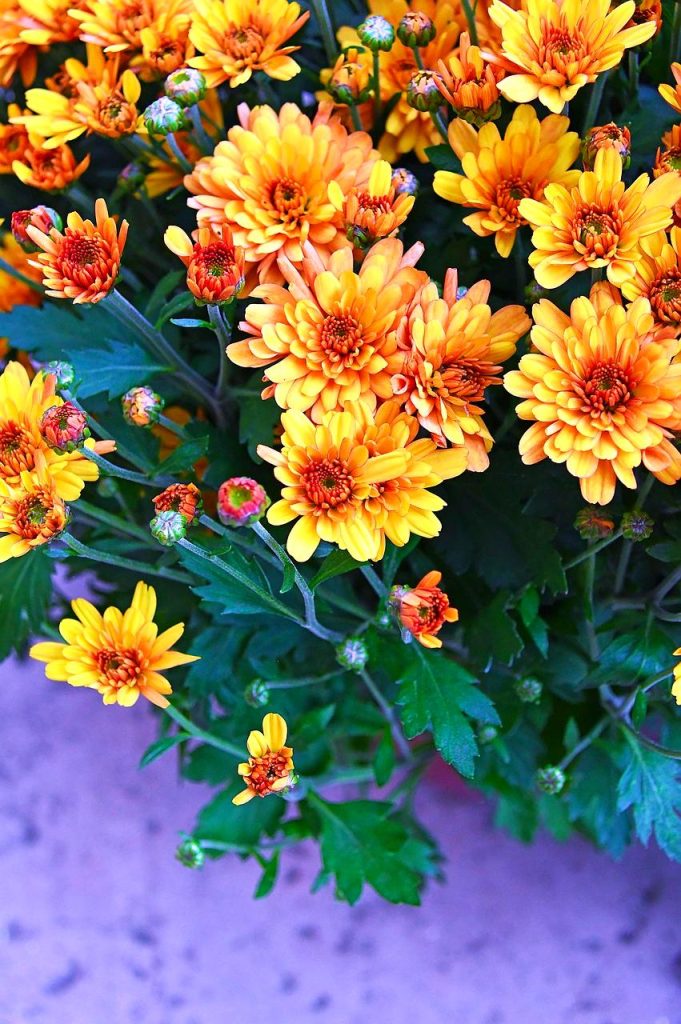
Mums are the quintessential fall flowers, bursting forth with color as the weather cools. With a variety of hues—red, yellow, orange, and even white—these perennials can instantly warm up your landscape.
September is ideal for planting mums, as they will begin to show their stunning colors just in time for fall festivities. For the best results, choose a location that receives ample sunlight, ideally six hours a day, and ensure that you plant them in well-drained soil to prevent excess moisture around the roots. Potted mums should be planted deeply enough so that the soil covers the pot’s edge. Regular watering during dry spells will also help establish strong roots. Additionally, consider applying a light layer of mulch in late fall to protect the roots from winter frost.
Sedum

Sedums, or stonecrops, are hardy succulents that excel in dry conditions, making them perfect for busy gardeners. Their unique, fleshy leaves and various flower shapes—ranging from star-like blooms to clusters—add diverse texture to your garden spaces.
September provides an ideal planting window for sedums as the weather cools and they begin to prepare for dormancy. Opt for well-drained, sandy soil and a location that receives full sun or partial shade. The key is to keep the soil dry; succulents do best when not overly moist. As they mature, sedums are low-maintenance and can thrive even in poor soil conditions. These plants will reward you with vibrant autumnal colors if allowed to bloom and can even act as a ground cover, suppressing weeds where planted.
Pansies

Pansies are beloved for their charming, face-like blooms that come in a broad spectrum of colors. These cool-weather lovers showcase their beauty with resilience as temperatures cool, making September an excellent time for planting.
In preparation for their successful growth, choose a rich, well-drained soil enriched with organic matter. Pansies thrive best in full sun to partial shade, so selecting the right location is crucial. Regular watering is necessary to keep them healthy—aim for about 1 inch of water weekly, adjusting based on rainfall. Furthermore, deadheading spent blooms will encourage continued flowering throughout the fall months. With their delightful fragrance and vibrant hues, pansies can create a warm welcome to your autumn garden.
Calendula
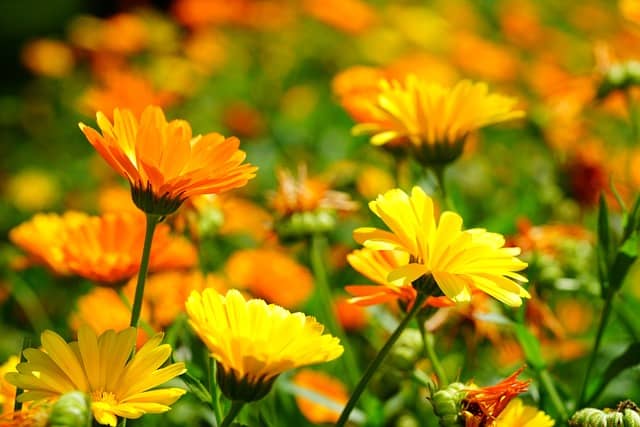
Also known as pot marigolds, calendulas are cheerful flowers that offer both beauty and utility, with petals that are edible. They bring bright bursts of yellow and orange to your garden, making them a popular choice for a sunny autumn display.
When planting calendula in September, opt for well-drained soil enriched with organic compost, which will help retain moisture without becoming waterlogged. They thrive in full sun but can tolerate partial shade in extremely warm climates. Once established, calendulas are relatively drought-tolerant but should be watered consistently during dry spells for optimum blooming. Additionally, harvesting the flowers regularly promotes new growth. As a bonus, their edible petals can be used in salads or as garnishes, allowing you to enjoy aesthetic beauty and culinary delight.
Snapdragons
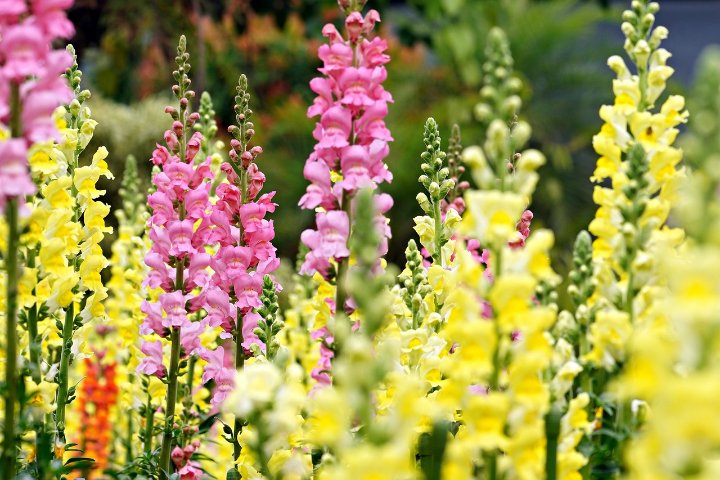
Snapdragons add striking vertical interest to your garden with their unique spikes of colorful blooms. They flourish in a variety of colors, bringing cheer and elegance to fall flower beds.
Planting snapdragons in September allows for cool-weather blooming into the fall. They prefer full sun and well-drained soil, so ensure you amend heavy soils with compost to increase drainage. Regular watering is essential, especially in the initial establishment phase, with a focus on keeping the soil consistently moist but not soggy. After flowering, consider cutting them back to promote further blooms through the frosty months. Snapdragons can survive light frost, making them a resilient choice for the fall landscape.
Ornamental Kale
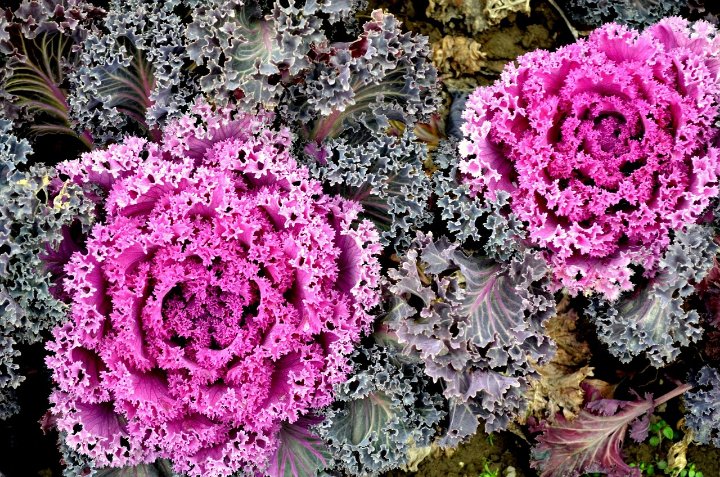
Though not a traditional flowering plant, ornamental kale provides stunning covered foliage that brightens your garden with eye-catching textures and colors throughout autumn. They can be edible but are mainly grown for decorative purposes.
Plant ornamental kale in September to take full advantage of their vibrant hues. These plants thrive in full sun to partial shade and prefer well-drained soil with plenty of organic matter. They are cold-tolerant perennials, meaning they can survive frost and often become even more colorful with exposure to chilly temperatures. Keep the soil consistently moist as they establish, especially in warmer areas. Grouping various colors can create a visually striking display and enhance your garden’s aesthetic depth during fall.
Coreopsis
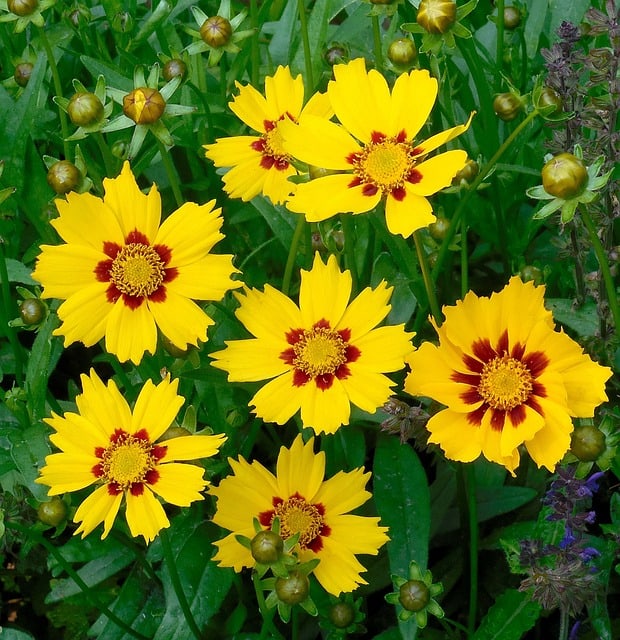
Coreopsis, commonly known as tickseed, bursts with bright yellow flowers that bring sunshine to any garden. They are hardy perennials that require little maintenance once established, ideal for a busy gardener.
September is the perfect time to plant coreopsis; these resilient flowers do best in full sun and well-drained soil. Be sure to select an area with full sunlight, as they tend to bloom more profusely when they receive at least six hours of sunlight daily. Water the plants consistently as they establish but be cautious not to overwater, as they prefer well-drained conditions. Once in bloom, coreopsis will attract butterflies, making your garden a vibrant, living tapestry of color and life throughout the fall.
Gaillardia (Blanket Flower)
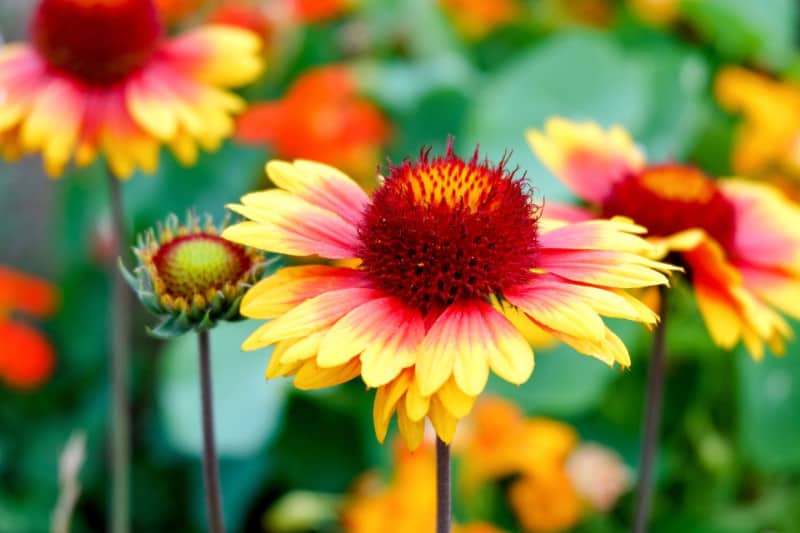
Gaillardia, or blanket flower, is a resilient and vibrant perennial that can add bursts of color to your garden. With its beautiful red, orange, and yellow blooms, gaillardia thrives in sunny spots and poor soils, making it an easy and effective addition to your autumn garden.
Planting gaillardia in September allows the flowers to establish roots before winter dormancy sets in. They prefer full sun, so ensure a location that gets at least six to eight hours of sunlight each day. Plant them in sandy or loamy soil with good drainage to prevent root rot. Water them thoroughly after planting but allow the soil to dry out between watering sessions. Regular deadheading will encourage new blooms and extend their flowering season into the late fall.
Helenium

Helenium, often known as sneezeweed, showcases its vibrant golds and burnt oranges in the fall garden. This perennial adds lively color during a time when many summer flowers are fading away.
September is the perfect time to plant helenium, allowing it to get established before winter. Selected locations should get several hours of sunlight, preferably complete sun exposure. Helenium thrives in slightly moist, well-drained soil, so consider adding compost to enhance its richness. These flowers appreciate regular watering, particularly during their initial growth phase, but be cautious not to over-saturate. Helenium attracts various pollinators, making it not just a beauty but a tremendous contribution to your garden ecosystem.
Foxglove
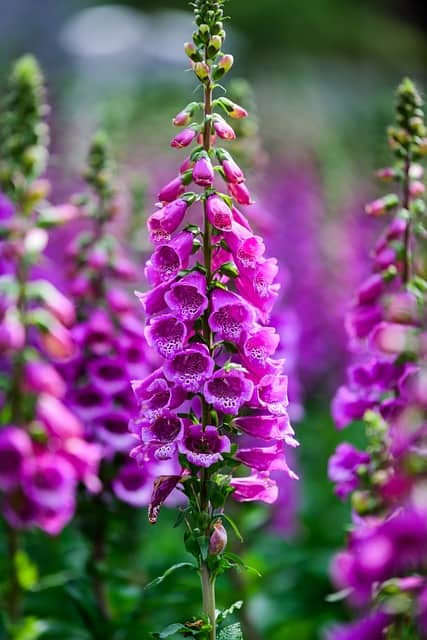
Foxglove adds an enchanting, grand touch to any garden, with tall spikes of bell-shaped flowers that exhibit ethereal beauty. They stretch towards the sky, making them a magnificent sight in fall gardens.
Choose to plant foxgloves in September to provide them with ample time to establish roots before winter. They prefer well-drained, rich soil and thrive in partial shade to full sun, depending on your climate. The key to successful foxglove growth is consistent moisture while ensuring the soil doesn’t become waterlogged. These flowers can be short-lived perennials, so consider them in a spot where they can naturalize and reseed for future seasons, offering continued beauty year after year.
Sweet Alyssum
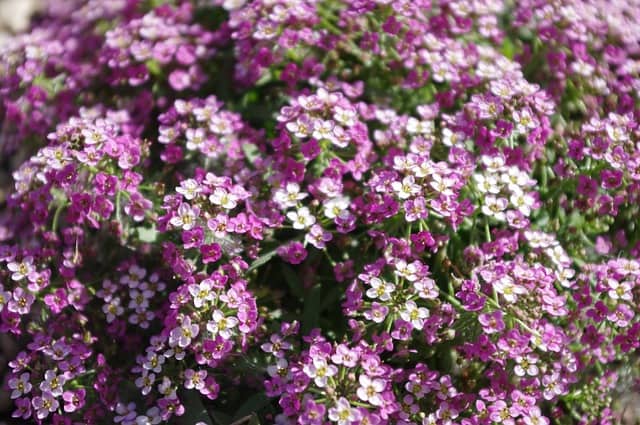
Sweet alyssum creates a lovely, low-growing carpet of tiny, fragrant flowers that are perfect for borders or as ground cover. Their delicate appearance can soften any edge of your garden, bringing grace and harmony to your landscapes.
Planting sweet alyssum in September is ideal, as they thrive in cooler temperatures. These flowers prefer well-drained soil enriched with organic matter, thriving in full sun to partial shade. Regular watering encourages healthy growth, aiming for moist but not soggy conditions. Additionally, deadheading spent flowers will promote continuous blooming, ensuring that your garden remains fragrant and inviting throughout the fall months.
Japanese Anemone
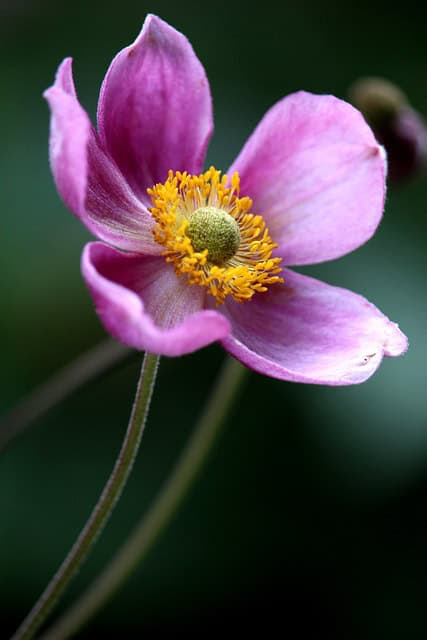
Japanese anemones exude elegance with their delicate blooms that grace gardens in late summer to fall. Their charming white and pink flowers can create a sophisticated backdrop, enhancing the beauty of your garden.
September is the ideal month to plant Japanese anemones, allowing them to establish over fall and provide stunning blooms when other plants are winding down. They thrive in partial shade and well-drained, rich soils. Amending the planting area with organic matter will give them a hearty start. Although they prefer moisture, it’s essential to avoid waterlogging the roots, which can cause rot. Once established, they require minimal care and will gift you with beautiful blooms that can continue into late fall.
Siberian Iris
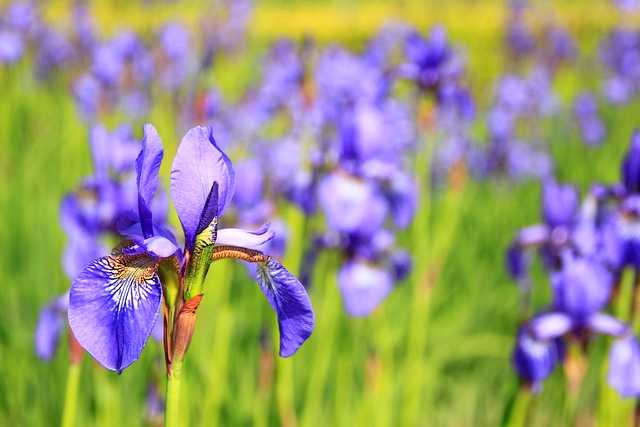
Siberian irises are incredibly hardy and easy to cultivate, providing a stunning splash of purple beauty with their graceful, slender blooms that sway in the breeze. Planting these beauties in September allows for well-established growth, ready to impress in the coming spring.
Opt for a sunny spot with well-drained soil when planting Siberian irises. They thrive in rich, moist conditions, so amending the soil with organic compost can promote healthy blooms. Be sure to water them regularly during the initial growth phase but avoid excess moisture around the roots, especially as they settle in. Once established, these irises are reasonably low-maintenance, making them a reliable and gorgeous addition to your garden.
Toad Lily
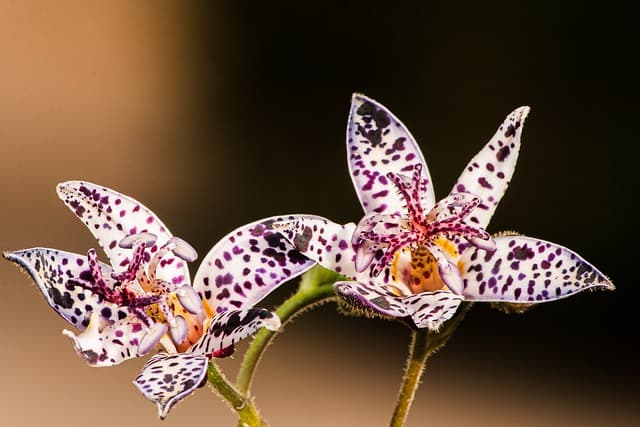
Toad lilies, with their unique, spotted blossoms, offer an exotic touch to your fall garden. Their delicate flowers can be an unexpected and delightful surprise, blooming well into autumn, making them a special addition.
September is an excellent time to plant toad lilies. They prefer shady areas with well-drained, rich soil. To plant, ensure the soil maintains a slightly moist condition, as toad lilies do not tolerate drought well. Once established, these plants will thrive with minimal care, rewarding you with blooms even in the cooler months. Group them with other shade-tolerant plants to create an inviting, lush corner in your garden.
Euphorbia
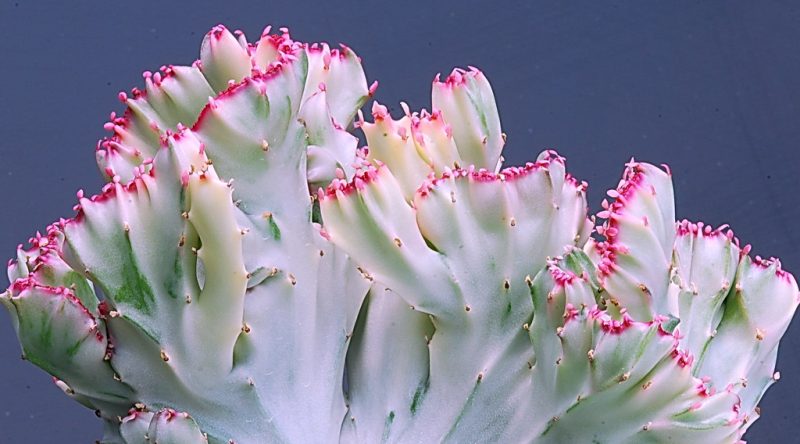
Euphorbia, or spurge, adds unique architectural interest with colorful foliage and intriguing flower clusters. They offer versatility for gardeners with various preferences and are drought-tolerant once established.
Planting euphorbia in September will allow them to establish a robust root system before the cooler months. These plants thrive in full sun and well-drained soil, so ensure your chosen spot gets ample sunlight throughout the day. It’s crucial to avoid overwatering, as euphorbias prefer drier conditions. Once established, these plants can add textural contrast to your garden, creating visual intrigue and shelters for beneficial insects.
Autumn Crocus
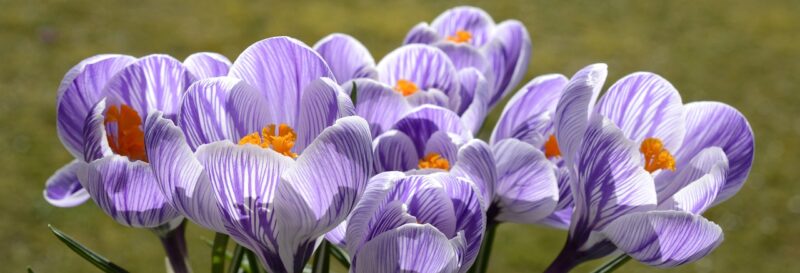
Unlike their spring cousins, autumn crocuses offer a delightful surprise as they bloom when fall sets in. Their delicate pink and purple flowers emerge, adding a splash of color during a time when many other flowers are fading away.
Planting autumn crocuses in September is a wise decision, letting them establish roots before the first frost. Choose a sunny or partially shaded spot in well-drained soil, as these crocuses prefer not to sit in water. Plant them shallowly, about 2-3 inches deep, making sure to leave enough space between bulbs to allow for their natural spread. They will reward your patience with elegant blooms that brighten your garden as leaves turn.
Perennial Sunflower
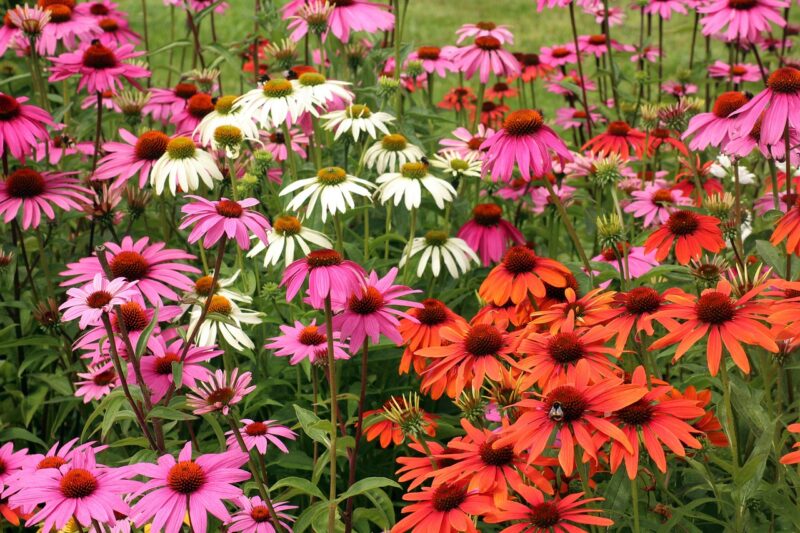
Perennial sunflowers bring lush cheer with their large, bright yellow blooms that follow the sun. These majestic flowers can reach impressive heights and create a captivating backdrop for any garden.
September is a strategic time to plant perennial sunflowers. They require full sun and prefer well-drained, rich soil for optimal growth. When planting, ensure regular watering, particularly in the initial establishment phase, as this will help their roots grow deeper. As they mature, deadheading will extend their blooming period into late fall, attracting bees and butterflies to pollinate and enrich your garden’s ecosystem.
Lily of the Valley
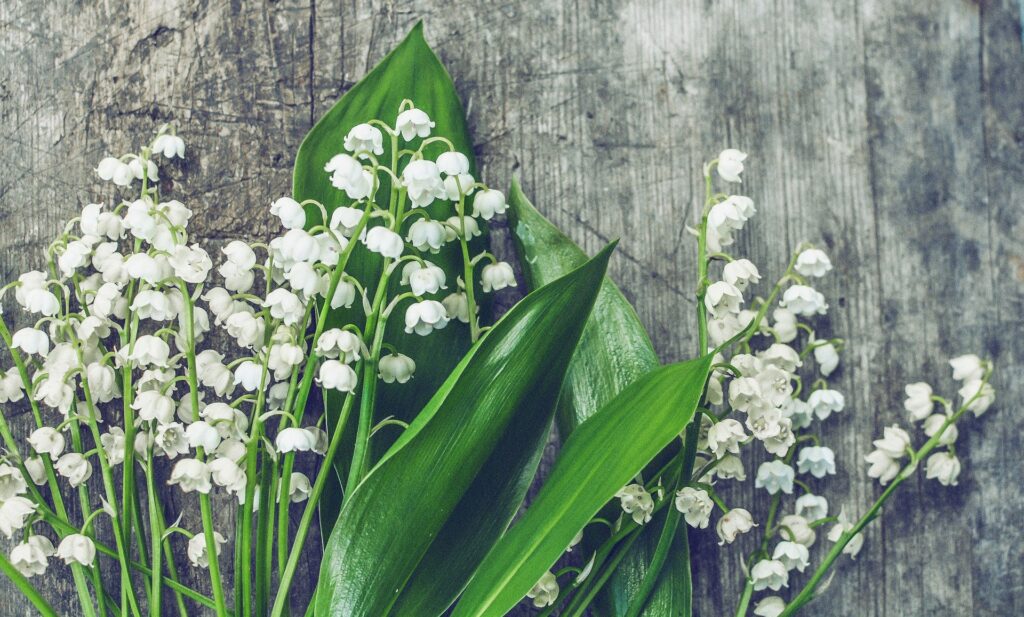
Lily of the Valley, with its enchanting bell-shaped flowers, exudes a sweet fragrance and is excellent for ground cover. These hardy plants are incredibly satisfying to grow, creating beautiful foliage and delightful blooms.
Planting lily of the valley in September grants time for root establishment before winter. They thrive in partial shade, often adorning woodland-like areas beautifully. These plants are particular about soil conditions, preferring well-drained, rich soils filled with organic matter. While they require consistent moisture, make sure that no standing water remains around their crowns. Once established, they can spread vigorously, providing year-after-year beauty and fragrance that will delight anyone walking through your garden.
Perennial Geranium
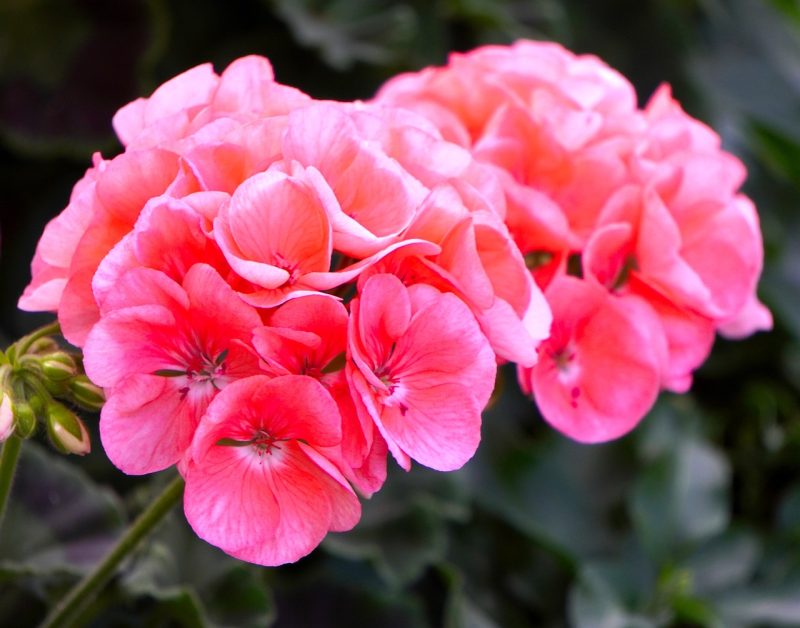
Perennial geraniums, or cranesbills, are hardy and charming flowers that can gracefully fill your garden with color. Their blooms range from pastels to deep shades, offering versatility that suits many garden aesthetics.
September planting allows these resilient plants to root well before the cold sets in. Select a planting spot in full sun or partial shade with well-drained soil. These geraniums do offer flexibility to resist drought after they are established, but watering is crucial for younger plants for their first few weeks. Grouping perennial geraniums with other late-season bloomers can create stunning contrast and extended visual interest in your garden.
Scabiosa
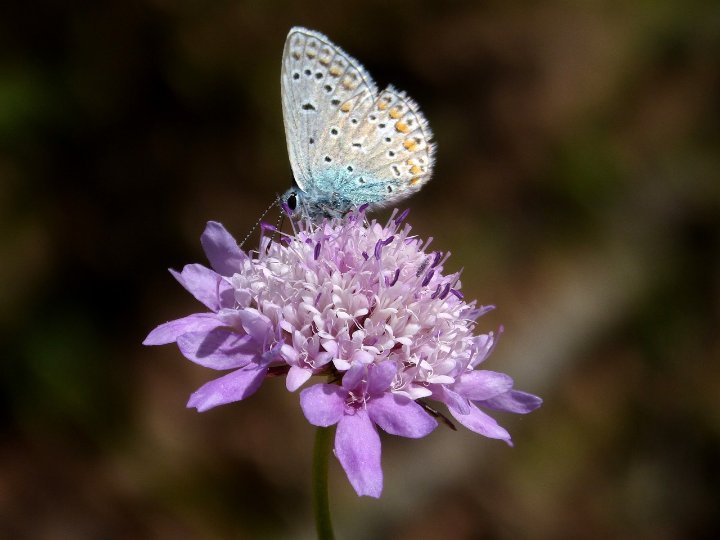
Scabiosa, known as pincushion flowers, offer unique rounded blooms that can be captivatingly eye-catching. Their interesting flower heads and varying colors appeal to gardeners who enjoy a twist on traditional blooms.
Planting scabiosa in September allows these lovely blooms to establish roots before winter. They thrive in full sun and tolerant of a variety of soil types, though well-drained soils are preferred. Water them regularly during the first season to encourage strong growth. Once established, these flowers can attract butterflies and other pollinators, turning your garden into a vibrant and lively environment.
Bellflower
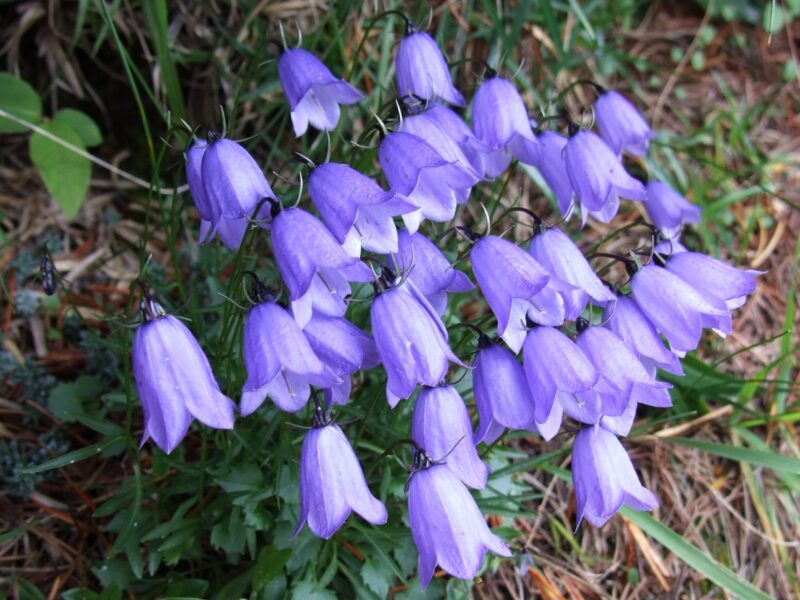
Bellflowers offer cup-shaped blooms that are charming and delightful additions to your garden, providing both beauty and versatility. These perennial flowers can spread gently, making them excellent choices for border gardens.
September planting is ideal for bellflowers, as it allows them to establish roots before winter. They thrive in well-drained soil and can tolerate both full sun and partial shade. Ensure frequent watering during early growth, avoiding soggy conditions, as they can lead to root rot. Once established, bellflowers will provide a reliable show of color in spring and summer, enhancing your garden’s overall visual appeal.
Tansy
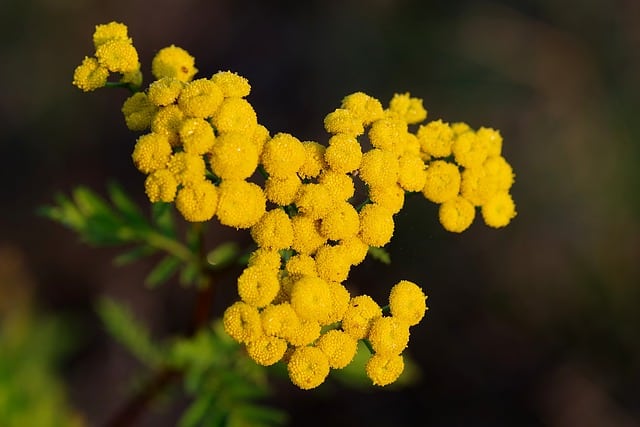
Tansy is an aromatic flowering herb that features bright yellow, button-like blooms. Not only do they bring aesthetic appeal to the autumn garden, but they can also be used as a natural pest repellent.
Planting tansy in September provides time for them to establish roots before the onset of winter. They perform best in well-drained soils and full sun, but they are adaptable and can tolerate poorer soil conditions. Water them regularly during the establishment phase, but be cautious about overwatering. Once they take root, you’ll find that they require minimal care while contributing significantly to both your garden’s beauty and its health.
Daffodil
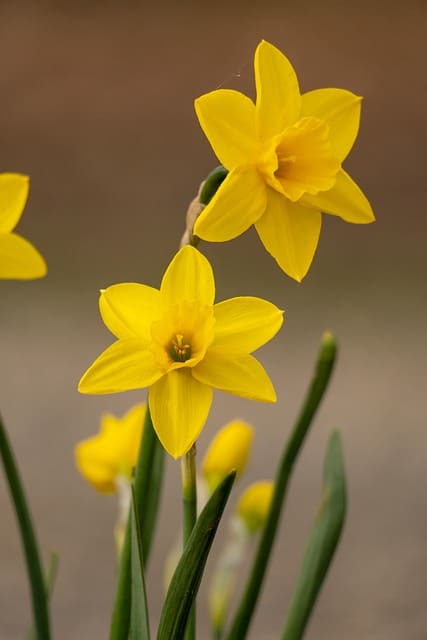
Traditionally associated with spring, daffodils can also be successfully planted in September in some regions. This allows them to become established in the ground, ensuring a joyous splash of color when they bloom in spring.
To plant daffodils, choose a sunny location with well-drained soil. Make sure to plant them at the correct depth of about three times the height of the bulb. Water them well after planting, ensuring that they are adequately hydrated for their root development. Mulching around the bulbs can help retain moisture and provide added protection from temperature fluctuations.
Tips for September Planting
When planting flowers in September, keep these important tips in mind:
Choose Your Varieties Wisely: Opt for flowers that thrive in cooler temperatures and can establish strong root systems in the fall. Make sure to have a mix of perennials and annuals, providing joy in both the immediate and distant future.
Soil Preparation: Take the time to prepare your soil adequately. Mix in organic matter such as compost or well-rotted manure to improve soil texture, structure, and nutrient content. This will help your newly planted flowers thrive.
Sunlight Requirements: Know the sunlight needs of your selected flowers. Some thrive in full sun, while others appreciate partial shade. Matching the plant to the right place in your garden is essential for success.
Watering: Newly planted flowers need consistent moisture to establish roots. Water them thoroughly after planting and check for soil moisture regularly, especially during dry spells. However, ensure that drainage is adequate to avoid waterlogging.
Mulching: A layer of mulch can act as insulation for plant roots, helping to regulate soil temperature and retain moisture. Mulching also suppresses weeds, creating an optimal environment for young plants.





